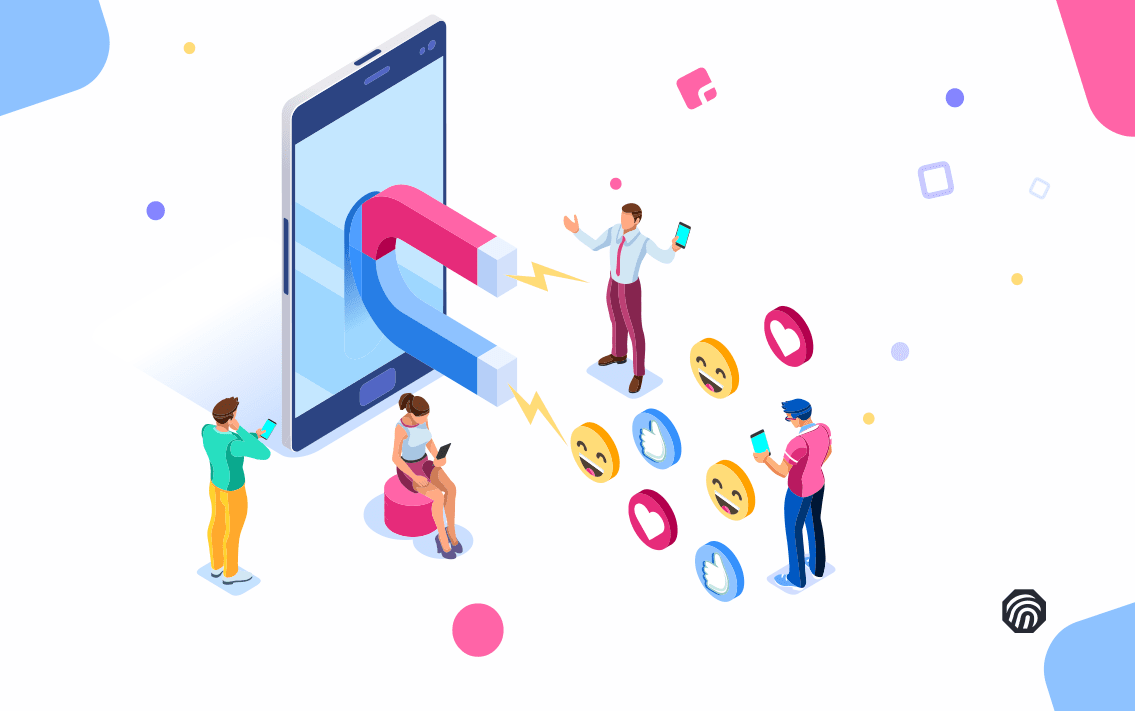The short answer? Yes, if you do it strategically.
The long answer? Social media advertising lets your brand directly reach your ideal audience. You can learn a lot about your audience’s needs, shopping preferences, values, and social media habits.
You can use all that knowledge to put together personalized ads designed to increase brand awareness, search engine performance, and leads. Then, you can deliver those ads to the right social media users at the optimal time.
The Benefits of Social Media Advertising
90% of brands use social media to increase brand awareness. In 2019, social media ad spend eclipsed print spending for the first time. Clearly, these companies know that advertising on social media is worth the time and effort. Let’s talk about the benefits of social media advertising further.
Greater Brand Recognition

Generally, people want to buy brands they recognize. Customers may choose brand-name products over off-brand or unknown brands for a number of reasons. If they know a certain brand “works,” if they want to fit in with a certain crowd, if they have strong loyalty to a brand: these are all examples of reasons customers choose familiar brands.
By making your brand highly visible, you can take advantage of this consumer behavior. Social media advertising can help build your brand recognition. It’ll get more eyes on your brand, especially if you can encourage followers to share the content to their own connections, further spreading your message.
Better Search Engine Rankings
Social media ads don’t directly increase your search engine presence, but they can help you with linkbuilding and inbound traffic.
If a social media follower clicks an ad and navigates to your site, that tells Google that your content is worth ranking higher than your competition. In turn, higher search engine rankings can lead to higher traffic to your site.
Insight into Your Audience
What’s trending in your industry? What’s important to your audience? Which of your competitors are they following, and why? If you analyze the performance of your social media ads, you’ll learn what images, language, or deals catch your target audience’s attention — and which ads perform best, leading to sales.
These insights can allow you to strategically allocate your marketing budget, so you can gain a lot of engagement for relatively low cost.
More Leads

When done well, ads can drive conversions. That’s good news, since younger customers today respond less frequently to traditional advertising on TV or in print. Brands have to adapt to the times by using social media advertising.
What are Targeted Ads?
We know that social media ads in general are effective, cost effective marketing tools for brands. Even better, social media also lets you narrow your targeting to specific demographics, interests and shopping behavior. It’s a more personalized form of advertising that can generate clicks and conversions. Here are some ways that targeted social media ads can drive stronger performance than more generic ads.
They Influence Customer Behavior

Target ads are effective because customers like relevant offers for products or services that truly interest them. In fact, a Harvard Business Review research study found that participants were more interested in buying a product when they thought the ad had been targeted to them. These participants felt that they already had traits implied by the targeted ads.
These ads can help your brand stand out in busy social media feeds. Not only do targeted ads influence customer behavior, they can also change what customers think or feel about themselves.
They Reach Local Customers

Targeted ads can also help brands reach local customers using location data and demographics. We talk a lot about the benefits of localized marketing strategy — how it can help your business and what a hyper-local strategy does, for example. Marketing to potential customers in certain cities or states isn’t enough; you have to reach them where they are and at the right time.
Targeted ads let you figure out how, when, and where your ideal customers bought a certain product. Adjust your ads to meet those customers’ needs, and next time they may buy from your brand.
Craft Custom Ads for Your Brand
There is a wide variety of benefits to social media advertising and targeted ads in particular. However, when your brand is on a tight budget or you’re working with a small team, you may not have the resources to put together targeted ads that work to the best of their ability.
Let ThumbStopper’s Brand AmplifierTM take over. With Brand Amplifier, you can create agency-level advertising campaigns that will help your brand reach your marketing goals. Plus, you’ll have access to campaign insights and performance, thanks to robust reporting and industry knowledge available on the platform.
Get the most out of what works and what doesn’t with your advertising campaigns. Choose Brand Amplifier to reach and engage your next customer on social media. Learn more about Brand Amplifier today.




